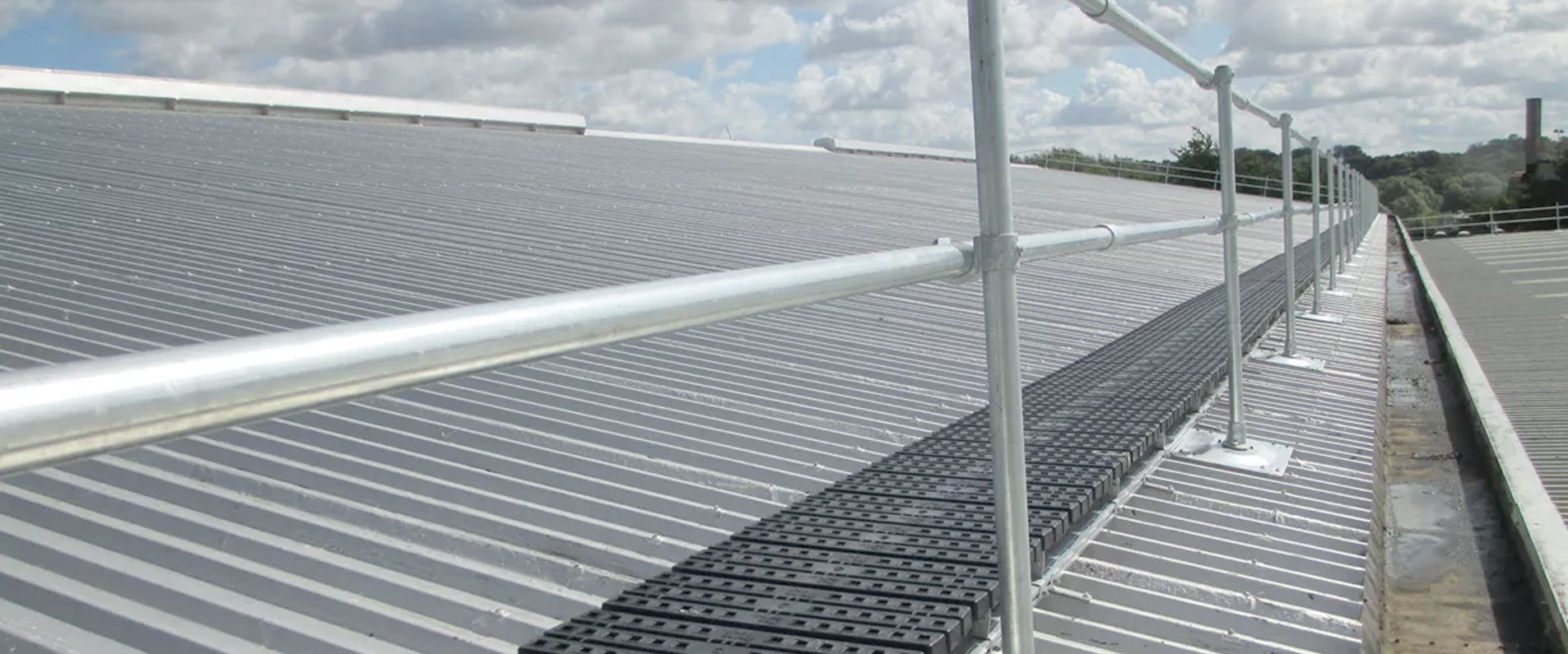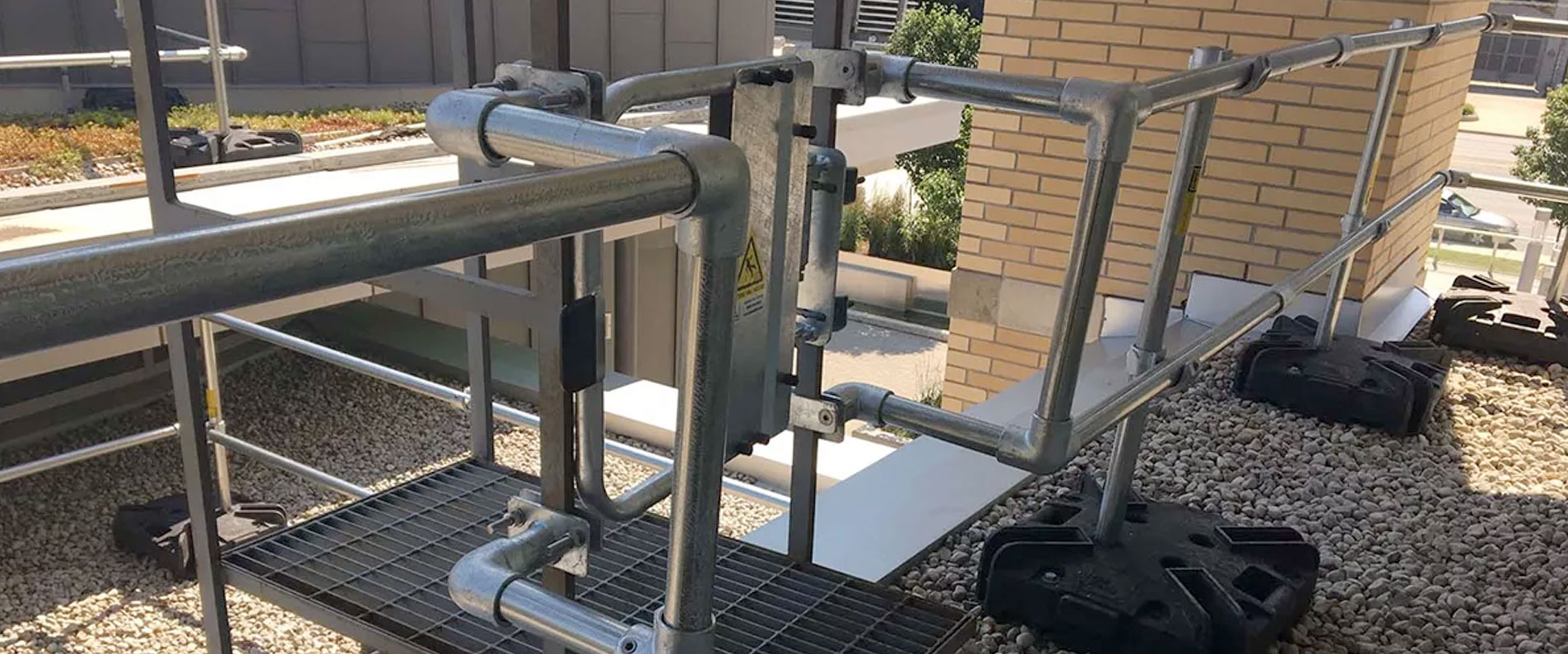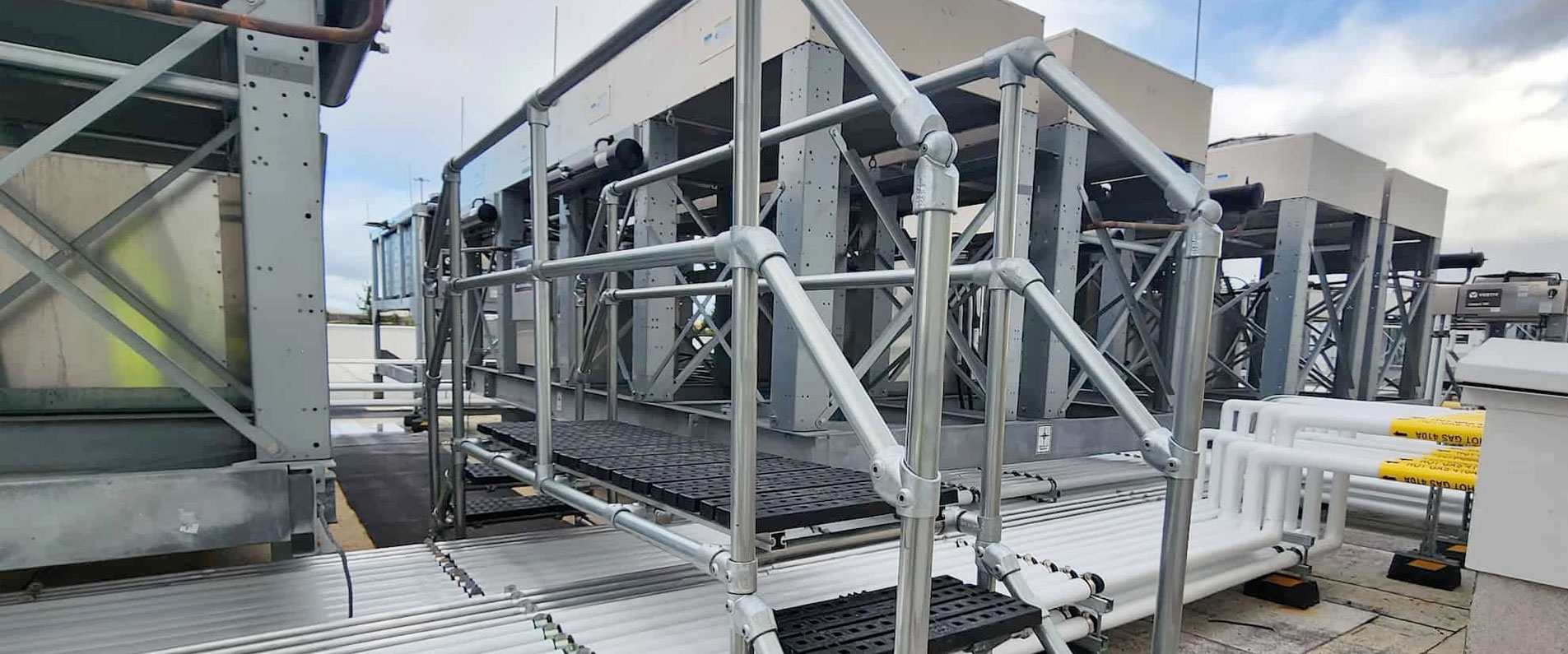Fall Protection Strategies for Rooftop Building Services Equipment
A typical household has a slew of services—plumbing, electrical, water, heating, cooling, ventilation—that speak to a fundamental standard of living. Equipment needed to provide these essential services (e.g., water heater, furnace, sump pump, compressor) is usually in the basement, a ground-floor utility room, or an outside enclosure.
If handy, the typical homeowner can change filters, switch out fuses, replace pipes, and the like without so much as using a step stool to reach panels, vents, and other areas for service. Fall protection is hardly an issue.
The average U.S. household has only 2.5 occupants (not counting pets). However, a commercial, institutional, or industrial building may host dozens, scores, hundreds, or even thousands of employees. Building services equipment is often located on the rooftop for the greatest efficiency of operations. Regardless of how handy the maintenance worker is, the unique challenges of working on a roof make fall protection necessary.

Go-to guardrails.
It cannot be understated how hazardous an unprotected roof edge is to workers. For flat or low-slope roofs, installing a perimeter guardrail system is the preferred remedy because it is “collective” fall protection that safeguards multiple workers without special equipment or training.
A modular guardrail system is adaptable to various rooftop configurations and is installed without welding, drilling, or penetrating the roof membrane. Rails and fittings are constructed of galvanized steel or lightweight aluminum for strength, durability, and corrosion resistance.
To comply with Occupational Safety & Health (OSHA) standards, the railings need to:
- Have a top-edge rails height of 42 inches (plus or minus 3 inches) above the walking-working surface.
- Include mid-rails, screens, mesh, intermediate vertical members, solid panels, or equivalent intermediate members between the walking-working surface and the top edge of the guardrail system when there is no wall or parapet at least 21 inches high.
- Install mid-rails at a height midway between the top edge of the guardrail system and the walking-working surface.
- Be capable of withstanding, without failure, a force of at least 200 pounds (890 N) applied in a downward or outward direction within 2 inches of the top edge at any point along the top rail.

Get to the safety gate.
As evident a hazard that the roof edge presents, entering and leaving the roof—via a ladder, hatch, or stairs—can spell double trouble. A self-closing safety gate offers an OSHA-compliant protective measure. It features a spring-loaded mechanism that closes the gate automatically once the worker passes through. Gates adjust to standard width openings from 30 to 39 inches and can be mounted to any flat, square, or tubular post from 1 to 1 1/2 inch diameter. They integrate seamlessly into guardrail systems
Walk on the safe side.
Once on the roof, workers can be directed toward equipment and other service areas with a roof walkway system. To build pathways and stairs, anti-slip, non-bounce, self-draining treads are set on sturdy steel frames. This not only protects workers but also protects the roof from direct foot traffic. Walkways can be fitted with guardrails for added fall protection.
Take another step toward safety.
Roofs with building services equipment may have ductwork, conduits, cables, piping, and other obstacles that present trip hazards. A roof crossover is an “up-and-over” roof walkway with stairs, a platform, and OSHA-compliant guardrails. Crossover platforms can be easily customized to eliminate specific hazards, including a change in roof level.

Get a lift from platforms.
Although already on the roof, workers may have to reach greater heights to inspect, maintain, and repair large building services equipment. Work platforms are safer and more efficient than ladders, especially for frequent tasks. Like walkways and crossovers, they feature sturdy steel frames, anti-slip treads for steps and platform decks, and OSHA-compliant guardrails. They also offer unmatched versatility depending on what is needed at the workstation.
- Fixed access platforms are designed for permanent installation
- Mobile work platforms are fitted with heavy-duty locking casters for station-to-station portability.
- Adjustable height platforms enable workers to access various heights.
- Custom work platforms can be designed for almost any special work requirement, including electricity, water, and shop air connections.
How can we help you?
If you are responsible for rooftop fall protection in your facility, FlexDecks can help. Our comprehensive services are at your disposal, including hazard assessments, design and consultation, engineering, manufacturing, installation, and follow-up inspections and maintenance. Contact us for an evaluation of your facility’s safety needs.
